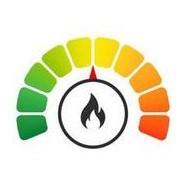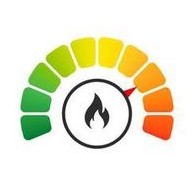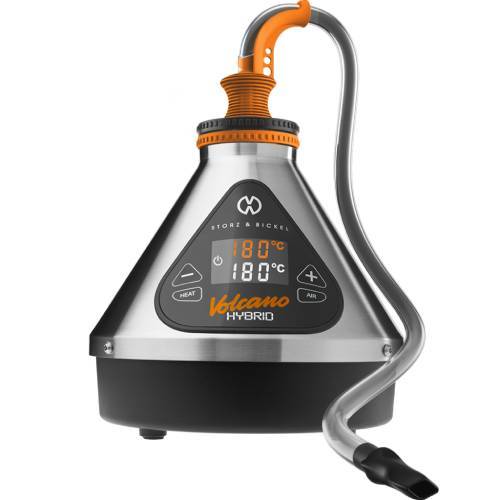The rising popularity of vaporizing cannabis has revolutionized the way people consume this beloved herb. With its potential health benefits and the ability to preserve the intricate flavors of different strains, vaping offers a customizable experience like no other. One of the key factors that determine the quality of your vaporizing experience is the temperature at which you vape. In this comprehensive guide, we will explore the science behind vaporizing cannabinoids and terpenes, uncover the ideal temperature ranges for specific effects, and provide tips for finding the perfect vaporizer temperature. So, sit back, relax, and prepare to unlock the full potential of your vaping sessions.
The Science of Vaporizing Cannabis
To understand the significance of temperature in vaporizing cannabis, it’s essential to delve into the intricate chemistry of the plant. Cannabis flowers contain trichomes, which are tiny structures that produce resin loaded with various psychoactive and medicinal molecules. These include over 100 cannabinoids, more than 100 terpenes, and numerous flavonoids. By adjusting the vaporization temperature, you can effectively optimize the concentration of specific molecules in each inhalation, tailoring your experience to your desired effects.
The Power of Cannabinoids and Terpenes
Cannabinoids are the primary compounds responsible for the psychoactive and therapeutic effects of cannabis. THC, one of the most well-known cannabinoids, provides a psychotropic high and a wide range of therapeutic benefits. On the other hand, CBD offers powerful therapeutic qualities without any psychotropic effects. Other cannabinoids such as CBG, THCV, and CBC are also gaining attention for their potential medicinal properties.
Terpenes, aromatic molecules found in cannabis and other plants, contribute to the unique scents and flavors of each strain. However, they also offer therapeutic effects and can synergize with cannabinoids to enhance their medicinal properties. Myrcene, for example, provides earthy and clove-like flavors while promoting relaxation and sedation. Caryophyllene, another major terpene, adds spicy notes and exhibits anti-inflammatory effects.
Unlocking the Boiling Points
Every molecule possesses a specific boiling point, which determines the temperature at which it transforms into vapor. While the boiling points of many cannabinoids and terpenes are still being studied due to the limited research caused by cannabis prohibition, we can rely on some general guidelines for vaporization temperatures. By experimenting with different strains and temperature ranges, you can find the optimal vaporization points for your desired effects.
Here is a table showcasing the boiling points of some key cannabinoids and terpenes:
| Molecule | Boiling Point (°C) | Boiling Point (°F) |
|---|---|---|
| THC-A | 105°C | 221°F |
| B-Caryophyllene | 119°C | 246°F |
| CBD-A | 120°C | 248°F |
| B-Sitosterol | 134°C | 273°F |
| A-Pinene | 156°C | 312°F |
| THC | 157°C | 314°F |
| CBD | 160–180°C | 320–356°F |
| B-Myrcene | 166–168°C | 330–334°F |
| A8 THC | 175–178°C | 347–352°F |
| Cineole | 176°C | 348°F |
| Limonene | 177°C | 350°F |
| P-Cimene | 177°C | 350°F |
| Apigenin | 178°C | 352°F |
| Cannflavin-A | 182°C | 356°F |
| CBN | 185°C | 365°F |
| Linalool | 198°C | 388°F |
| Humulene | 198°C | 388°F |
| Benzene | 205–365°C | 401–689°F |
| Terpineol | 218°C | 424°F |
| CBC | 220°C | 428°F |
| THCV | 220°C | 428°F |
| Pulegone | 224°C | 435°F |
| Combustion | 232°C | 450°F |
| Quercetin | 250°C | 482°F |
Customizing Your High: Ideal Vaporization Temperature Brackets
When navigating the realm of vaporizing cannabis, selecting the right temperature becomes a pivotal factor in unlocking a diverse range of psychoactive and therapeutic effects. It’s crucial to recognize that individual preferences and strain nuances significantly contribute to shaping these effects. Let’s embark on a journey through distinct temperature brackets and the specific molecules they activate.
Vaporizing Cannabis Low Temperature Range: 119–159°C (246–318°F)
Within this temperature spectrum, vaporization reveals THC and an assortment of terpenes, enriching your experience with delightful flavors and therapeutic benefits. Here are the key molecules highlighted in this bracket:
Caryophyllene (119°C/246°F)
A dominant terpene in numerous cannabis strains, Caryophyllene imparts a spicy flavor and exhibits anti-inflammatory effects, contributing to pain management.
Caryophyllene stands as a dominant terpene in various cannabis strains, earning the designation of a dietary cannabinoid due to its presence in culinary sources like black pepper. Its interaction with the CB2 receptor is noted for its potential in pain management by mitigating inflammation.
β-Sitosterol (134°C/273°F)
This cannabis flavonoid, β-Sitosterol, demonstrates notable anti-inflammatory activity.
β-Sitosterol, counted among the flavonoids within cannabis, showcases commendable anti-inflammatory properties.
α-Pinene (156°C/312°F)
Adding delightful notes of pine and rosemary to your vapor, α-Pinene is associated with anti-anxiety effects and collaborates with THC to enhance lung airflow.
Within this temperature range, α-Pinene introduces delightful nuances of pine and rosemary. Known for its anti-anxiety properties, this terpene is believed to counteract adverse effects of THC, such as short-term memory impairment, while synergizing to improve airflow to the lungs.
THC (157°C/314°F)
As the primary psychotropic component in cannabis, THC induces euphoria, happiness, heightened appetite, and altered states of consciousness.
THC takes the center stage as the principal psychotropic element in cannabis. Penetrating the blood-brain barrier, it activates CB1 receptors in the central nervous system, triggering alterations in neuron firing patterns and culminating in euphoria, happiness, laughter, and an increased appetite.
CBD (160–180°C/320–356°F)
CBD introduces a relaxing and calming effect, counteracting some of THC’s psychoactive effects, while offering antioxidant, neuroprotective, and anti-inflammatory properties.
While inducing relaxation without the typical psychoactive impact of THC, CBD plays a vital role in mitigating the effects of its counterpart. Temporarily blocking CB1 receptors, CBD operates through various molecular pathways to decrease inflammation, impart antioxidant effects, and offer neuroprotection.
Vaporizing Cannabis Low/Medium Temperature Range: 160–180°C (320–392°F)
Exploring this range unleashes additional terpenes and cannabinoids, providing a more comprehensive spectrum of effects. Let’s delve into the molecules targeted in this bracket:
Myrcene (166–168°C/330–334°F)
The most common terpene in cannabis, Myrcene (166–168°C/330–334°F), brings forth earthy and spicy flavors while promoting relaxation and sedation. Recognized for its prevalence in cannabis, Myrcene manifests in this temperature bracket, delivering a unique blend of earthiness, grape undertones, and spice. Its slight sedative effect contributes to the characteristic relaxation found in many indica cultivars.
Δ8-THC (175–178°C/347–352°F)
As an analogue of THC, Δ8-THC binds to CB1 receptors, offering anti-nausea, anti-anxiety, appetite-stimulating, painkilling, and neuroprotective effects. With a lower psychoactive potency than THC, it adds a subtle psychoactive kick to this temperature bracket.
Unveiling a subtle psychoactive kick, Δ8-THC emerges as an analogue of its more common counterpart. Binding to CB1 receptors, it brings forth a range of effects including anti-nausea, anti-anxiety, appetite stimulation, pain relief, and neuroprotection. Notably, it maintains a lower psychoactive potency compared to THC.
Cineole (176°C/348°F)
A terpene found in eucalyptus and occasionally in cannabis, Cineole exhibits anti-viral, painkilling, anti-fungal, antibiotic, and anti-inflammatory effects. Additionally, it increases cerebral blood flow.
Cineole, a captivating terpene more commonly associated with eucalyptus, makes a rare appearance in modern cannabis strains. Showcasing anti-viral, pain-relieving, anti-fungal, antibiotic, and anti-inflammatory effects, Cineole also stands out for its ability to enhance cerebral blood flow.
Limonene (177°C/350°F)
Infusing cannabis vapor with citrusy notes, Limonene enhances the cerebral and euphoric effects of THC, exhibiting anti-anxiety properties.
Limonene introduces citrusy notes to the cannabis vapor, elevating the cerebral and euphoric dimensions of THC. Backed by animal research demonstrating anxiety reduction and an increase in serotonin and dopamine levels, Limonene emerges as a multifaceted player in this temperature range.
P-Cymene (177°C/350°F)
Found in cumin and thyme, P-Cymene adds a sweet and citrusy aroma while displaying sedating effects.
Originating from cumin and thyme, P-Cymene lends a sweet and citrusy aroma, simultaneously offering sedative effects. Animal studies attest to its potential in inducing a calming influence.
Apigenin (178°C/352°F)
As a flavonoid found in cannabis and chamomile flowers, Apigenin exerts anti-anxiety effects without causing amnesia or sedation.
Apigenin, another cannabis flavonoid, stands out for its anti-anxiety effects. Present in both cannabis and chamomile flowers, this molecule acts on the same receptors as benzodiazepines but without inducing amnesia or sedation.
Vaporizing Cannabis Medium/High Temperature Range: 181–200°C (357–392°F)
Within this temperature spectrum, additional therapeutic compounds are released, but caution is advised due to the potential for the vaporization process to produce harmful chemicals. Here are the molecules targeted in this bracket:
Cannflavin A (182°C/356°F)
A flavonoid predominantly found in cannabis leaves, Cannflavin A showcases impressive anti-inflammatory properties.
Cannflavin A, existing in larger quantities within cannabis leaves, presents a remarkable display of anti-inflammatory prowess.
CBN (185°C/365°F)
As a degradation product of THC, CBN introduces sedating effects and exhibits anti-inflammatory properties. It also holds promise as an anticonvulsant and may alleviate symptoms of psoriasis.
CBN, originating from the degradation of THC, introduces sedative elements alongside anti-inflammatory effects. Beyond these attributes, it holds potential as an anticonvulsant and may contribute to relieving symptoms associated with psoriasis.
Linalool (198°C/388°F)
Responsible for floral scents, Linalool possesses antidepressant, anti-anxiety, and immunopotentiating properties.
Linalool, contributing a potent floral aroma to numerous cannabis cultivars, imparts antidepressant, anti-anxiety, and immunopotentiating properties, directly enhancing several immune functions.
Humulene (198°C/388°F)
Contributing to the hoppy aroma of cannabis, Humulene exhibits anti-inflammatory effects. Recognized as a ‘dietary cannabinoid,’ this terpene can produce anti-inflammatory effects by binding to CB2 receptors of the endocannabinoid system.
As another major terpene present in cannabis flowers, Humulene contributes to the distinctive hoppy aroma. Acknowledged as a ‘dietary cannabinoid,’ this terpene exercises its anti-inflammatory effects by binding to the CB2 receptors of the endocannabinoid system.
Vaporizing Cannabis High Temperature Range: 201°C+ (393°F+)
At the upper echelon of the temperature spectrum, the release of all beneficial compounds within cannabis flowers is possible. However, caution is warranted, as harmful chemicals may also be produced. Here are the molecules targeted in this bracket:
Benzene (205–365°C/401–689°F)
Regrettably, this temperature bracket releases benzene, a carcinogen found in cannabis smoke. It stands as a pivotal reason why many users have transitioned to vaping. While some vaporizers effectively eliminate benzene up to temperatures of 200°C, the precise vaporization point in cannabis consumption remains uncertain.
In this temperature bracket, the release of beneficial molecules is accompanied by benzene, a carcinogenic compound found in cannabis smoke. This underscores the motivation behind the shift towards vaping, as certain vaporizers have demonstrated efficacy in eliminating benzene up to temperatures of 200°C. However, the exact vaporization point of benzene in cannabis consumption remains undetermined, with suggestions ranging as high as 365°C.
Terpineol (218°C/424°F)
Endowing a subtle lilac-like aroma, Terpineol boasts various therapeutic effects, including anti-malarial, antibiotic, antioxidant, and sedative properties.
Terpineol introduces a subtle lilac-like aroma, commonly found in perfumes and cosmetics. Its therapeutic effects encompass anti-malarial, antibiotic, antioxidant, and sedative properties.
THCV (220°C/428°F)
As an analogue of THC, THCV activates and blocks CB1 receptors, offering anticonvulsant, pain-relieving, and anti-inflammatory effects. Additionally, it may contribute to weight loss and fat metabolism.
THCV, evaporating at higher temperatures, emerges as an analogue of THC. While occurring in minor concentrations, cultivars high in THCV exist. Operating by activating and blocking CB1 receptors, THCV is associated with anticonvulsant properties, pain relief, anti-inflammatory effects, and potential contributions to weight loss and fat metabolism.
Pulegone (224°C/435°F)
Generating a pleasant peppermint and camphor scent, Pulegone offers memory-boosting and sedating effects, with suggested potential in combating fevers.
Pulegone presents a delightful peppermint and camphor aroma, accompanying memory-boosting and sedative effects. Preliminary evidence also hints at its capacity to combat fevers.
Quercetin (250°C/482°F)
A flavonoid boasting potent antioxidant properties, Quercetin additionally exhibits antiviral and antineoplastic effects.
Quercetin, classified as a cannabis flavonoid, stands out for its potent antioxidant properties, rivaling those of vitamin C. Beyond this, it showcases antiviral and antineoplastic effects.
By navigating these temperature brackets, cannabis enthusiasts can refine their experience, tailoring the high to their preferences while keeping a keen eye on the potential nuances each molecular player brings to the table.
Tips for Finding Your Ideal Vaporizer Temperature
Discovering the optimal vaporizer temperature is a personalized expedition that demands experimentation and exploration. Here are some guidelines to facilitate your journey:
Explore Your Vaporizer
Before investing in a vaporizer, ensure it provides temperature control options. Not all devices grant the flexibility to fine-tune the temperature range, so opt for a model aligned with your preferences.
Embark on your vaporizing journey with a device that empowers you with temperature control options. Not every vaporizer allows you to precisely adjust the temperature range, so choose a model that aligns with your preferences.
Maximize the High
If your primary goal is reaching a heightened state, conserve your lungs by maintaining temperatures at a maximum of 170°C. This range facilitates the evaporation of most psychoactive molecules while retaining flavorful terpenes. Keep in mind that focusing on high-THC buds may limit access to CBD.
For an elevated experience, keep temperatures at a maximum of 170°C, sparing your lungs unnecessary strain. This range ensures the evaporation of most psychoactive molecules while preserving flavorful terpenes. However, be mindful that with high-THC buds, CBD availability may be limited.
Set Ambitious Goals
To achieve comprehensive vaporization of target molecules, aim for temperatures approximately 10°C higher than their boiling points. This compensates for potential vaporizer inaccuracies, ensuring an optimal vaping session.
Set your temperature ambitions around 10°C above the boiling points of your desired components. Given the potential variability in vaporizer accuracy, this strategy guarantees the thorough vaporization of your target molecules.
Heat for a Therapeutic Spectrum
Medical users seeking a broad range of terpenes and cannabinoids should opt for temperatures around 220°C. This elevated range guarantees access to a diverse spectrum of therapeutic compounds.
For medicinal users desiring an extensive array of terpenes and cannabinoids, temperatures around 220°C are essential. This higher range ensures the extraction of a comprehensive spectrum of therapeutic compounds.
Balance THC and CBD
When vaping a strain with a 1:1 THC to CBD ratio, note that THC evaporates at a lower temperature than CBD. Prepare for psychoactive effects along with the medicinal benefits of CBD.
In the pursuit of a 1:1 strain, where THC and CBD share equal prominence, be aware that THC evaporates at a lower temperature than CBD. Anticipate psychoactive effects while benefiting from the medicinal aspects of CBD.
Reimagining Vaped Buds
Despite their brown appearance, vaped buds retain residual cannabinoids. Instead of discarding them, consider repurposing these nuggets for edibles or tinctures. The potency they still hold might surprise you.
Don’t be deceived by the brown and seemingly unappetizing appearance of vaped buds—residual cannabinoids persist. Rather than discarding them, explore the potential of these buds in crafting edibles or tinctures. Their lingering potency can yield unexpected results.
In Conclusion
Mastering the art of vaporizing cannabis revolves around comprehending temperature control intricacies. By delving into the boiling points of cannabinoids and terpenes and experimenting across temperature brackets, you can tailor your high and unleash the full potential of this remarkable plant. Whether seeking relaxation, pain relief, or a psychoactive adventure, your vaporizer temperature is the gateway to a personalized cannabis journey. So, vape with confidence, armed with the knowledge to optimize your experience for maximal enjoyment and therapeutic benefits.
Remember, your ideal vaporizer temperature is a personal odyssey, so revel in the experimentation and uncover the unique effects that resonate with you. Happy vaping!







